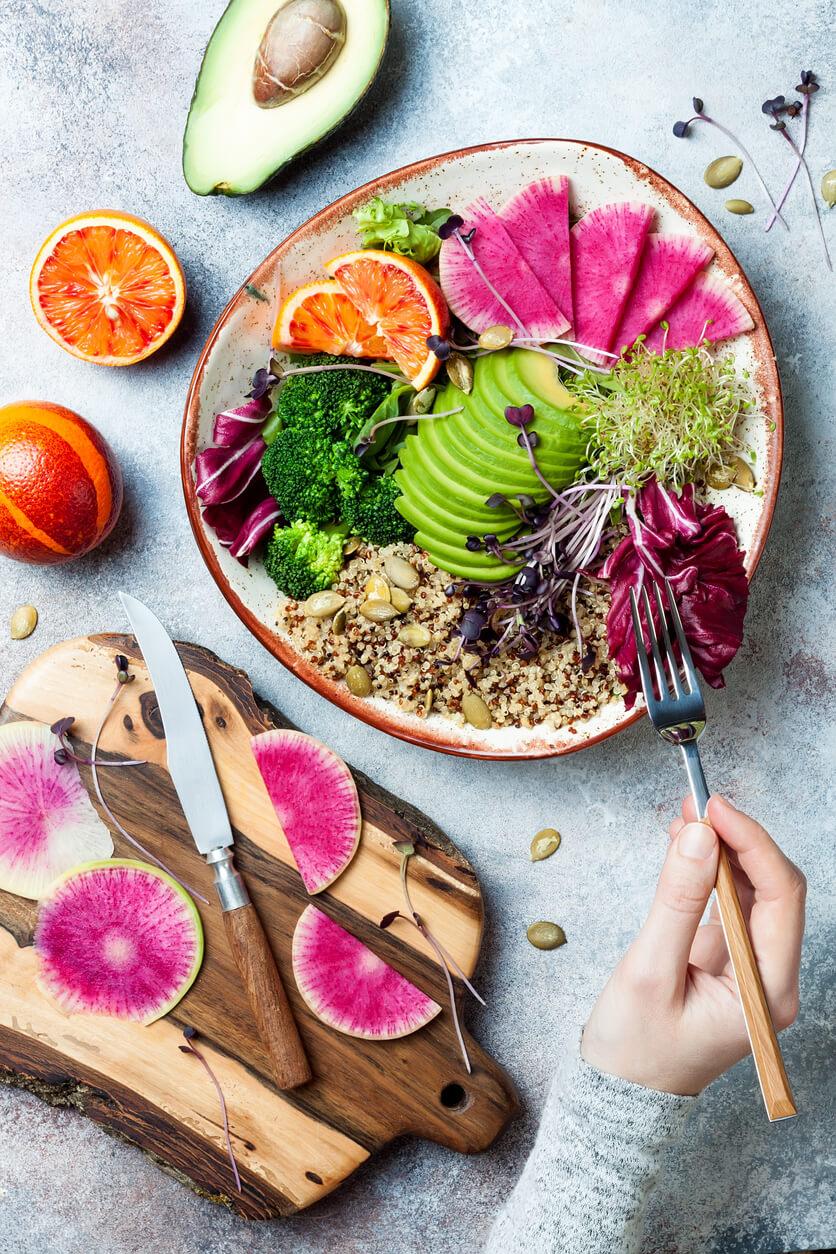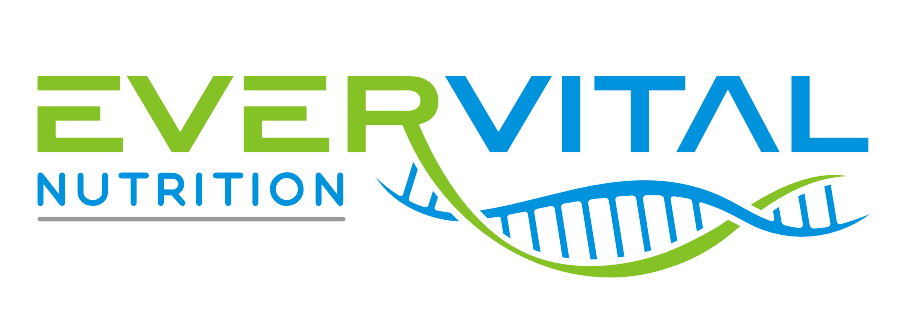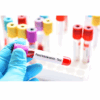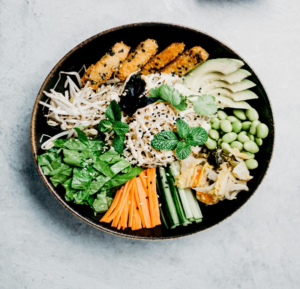
It’s estimated that over 20% of people deal with food intolerances. It seems like it’s becoming more common to see gluten-free, diary-free, and nut-free menu options at restaurants, which is great for people that know which foods they don’t tolerate.
But what if you aren’t sure if certain foods are causing, at least in part, your digestive symptoms? Should you just eat the same 5 foods on repeat so that you don’t have explosive diarrhea or massive bloating after every meal?
What do you do if the foods you love don’t love you back?
It’s not always easy to tell which foods are the problem. One time you may eat a certain food that you think is a problem and it produces unwanted gut symptoms, but the next time you eat it, you feel fine.
Elimination diets are an important tool used by dietitians for years to help determine which foods cause symptoms for their patients. These types of diets are the gold standard for figuring out exactly which foods trigger gut health symptoms.
Your gut health impacts your entire body, and the foods you eat and whether they cause inflammation in your body is a huge factor in how you feel on a daily basis.
Benefits of Doing an Elimination Diet
Besides understanding exactly which foods cause symptoms for you, the removal of inflammatory foods can give your gut time to heal.
Repeated or daily ingestion of foods that your immune system responds to can cause your immune system to become overresponsive. When this is chronic, your immune system can eventually become suppressed, losing its ability to protect your body from harmful substances, germs and cell changes that could make you ill.
Allergy vs. Intolerance vs. Sensitivity
People often confuse food allergies with food intolerances and sensitivities, but they are actually quite different:
- Food allergies are life-threatening responses that occur due to the protein in a certain food. Allergic reactions can include rashes, eczema, or hives, tingling or itching in the mouth or lips, swelling of the face, lips or throat, abdominal pain, diarrhea, nausea, dizziness or light-headedness, and anaphylaxis.
- Food intolerances occur when there is a deficiency of a host (that’s you!) enzyme required to digest the food component. An example of this would be a lactose intolerance due to insufficient lactase. These food intolerances are highly individualized, and symptoms are subtle and often delayed, occurring anywhere from 3 to 72 hours after eating the offending food. Symptoms can include: diarrhea, gas, bloating, and other GI symptoms. Some intolerances can cause flu-like symptoms.
- Food sensitivities are an adverse immune system response to ordinarily harmless foods. Studies have linked food sensitivities to a variety of microbial signals that could be induced by gut infections or a decrease in the number or diversity of beneficial gut microbiota. Symptoms can look exactly like food intolerances.
Tough to figure it all out, right?
Luckily, we can test for potential food sensitivities with an antibody-based food sensitivity test. An elimination diet based on antibody testing is significantly more reliable and preferable than generalized diet plans or exclusion diets based on food journaling and diet history alone.
How Do Food Intolerances Impact Your Gut Microbiome
Studies have shown a connection between viral and bacterial infections and the onset of Celiac disease, non-Celiac gluten sensitivity (NCGS) and food allergies. It’s possible that repeated bacterial infections during childhood may trigger food sensitivities later on in life.
What you eat has a significant impact on gut bacteria diversity and abundance. If you eat foods that your body sees as an antigen and the immune system is called into action, inflammation occurs and entire gut microbiome populations can be changed for the worse.
And, the gut microbiota has the capacity to modify the chemical structures of many dietary molecules, including allergens or antigens… so your gut bacteria can change how your body processes and manages food, including whether you can eat certain foods without GI symptoms or not.
Seems like we’re not running the show here, doesn’t it?
How Does the Elimination Diet Work?
Basically, what you want to do first when you plan to begin an elimination diet is decide which foods you plan to eliminate. This is where GI-MAP testing can help narrow that down. Then, remove these foods to allow your gut to heal. And then reintroduce the eliminated foods, one by one, checking for symptoms.
Foods to Eliminate
Common food intolerances and sensitivities include:
- Gluten
- Dairy
- Nuts
- Seafood
- Nightshades (tomatoes, eggplant, peppers, and potatoes)
- Eggs
- Tree nuts (almonds, pecans, walnuts, etc.)
- Peanuts
- Refined carbs
- Sugar
- Alcohol
- Corn
- Fructose
- Histamines – naturally occurring chemicals in foods like cheese, pineapples, bananas, avocados and chocolate. Common with overgrown histamine-producing bacteria. Test your gut if you suspect this!
Foods to Eat
The best foods to eat during an elimination diet are those that you know cause zero symptoms. Avoid foods that you suspect are problematic. For most people, this will include:
- Fruit
- Veggies
- Meat or other protein sources
- Dairy-free yogurt or milk
- Healthy fat – avocado oil, olive oil, avocados
- Beverages – water, herbal teas
Step-by-Step Guide
- It’s best if you do an elimination diet under the guidance of a nutritional professional. Be sure you are healthy enough to manage removing large food groups for a period: you could be lacking key nutrients if you don’t compensate for what you’ve removed.
- Completely remove foods that are possible triggers for you for 2 months. A dietitian can help you determine what these foods are if you need help assessing this. Read nutrition labels to be sure you are not still ingesting the eliminated foods. The top allergens are required to be listed on nutrition labels, so check the ingredients list. Gluten is a particularly sneaky ingredient… it’s everywhere.
- Keep a food journal. This is a bit cumbersome, but totally worth the effort. Many of the food logging apps have a food journal option where you can easily list the foods eaten and how they made you feel. For example, my patient portal has a Food, Mood, and Poop Journal… a super fun way to log what you ate, how it made you feel and any mood and GI symptoms, and how your poop was that day. It makes it really easy to make connections between what you eat and your symptoms.
- After 2 months, add your eliminated foods back into your diet, one food at a time.
Here’s how this works:
- On Day One, choose one food (the food least likely to be a problem is a good place to start) and eat one bite. Monitor for symptoms.
- On Day Two, if you had no symptoms yesterday, eat two bites of the same food from yesterday. Monitor for symptoms.
- On Day Three, if you had no symptoms on any of the prior days, eat a normal portion of that same food. If you’ve eaten a normal portion of that food and had it for 3 consecutive days with no symptoms, you can count that food as a “safe” food.
- Repeat with the rest of your eliminated foods.
- If a food does cause symptoms, even if they’re mild, keep it on the elimination list for now. You can reintroduce it at a later time when your gut has had more time to heal.
Want to know if your gut symptoms are due to the food you eat and if your gut bacteria have a role in those gut health symptoms? It’s easy to test and easy to fix. Contact EverVital Nutrition and let’s get you back to your life!











